Hello everyone. Recently I imaged M 42 and IC 434, and I would like some other opinions on the presence of artifacts in my images. The artifacts in both images appears to be the presence of some excess light entering from the corners / sides of the field of view, from a particular direction. The moon was up on both nights, though as I will explain why, I don't believe it was the cause of the artifacts. I imaged M 42 first thinking that the excess light may have been coming from Alnitak which the following CN thread suggests, especially given the artifact being directed towards that direction in my image. 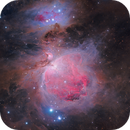
Orion's Sword and nearby surroundingsDirection of M 42 Artifact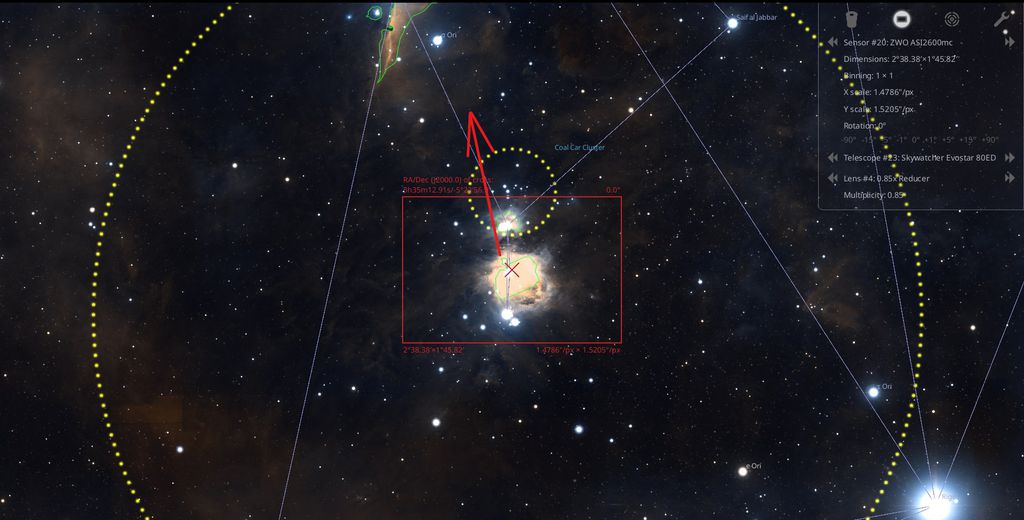 I then imaged IC 434, and a similar artifact appears towards the top right of the image. Given that the artifact is directed away from the bright stars of Orion's Belt, my current assumption is that Orion's Sword (M 42, Running Man, and Lost Jewel) is causing the artifact. Note my camera was rotated 90 degrees from north for the framing of this shot. 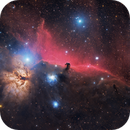
The Alnitak Region; Horsehead, Lump star, and FlameDirection of Horsehead Artifact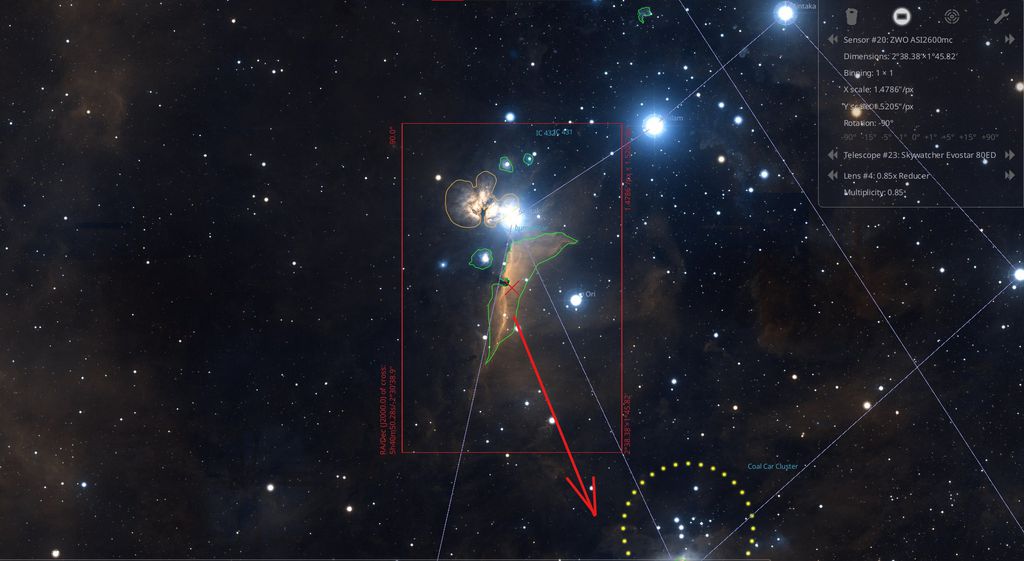 I believe, in both cases, the artifacts are on-sky sources. As I run an EQ setup, I'd imagine streetlights or other sources would rotate the artifact around the field over the imaging session, which is not the case here. This partially leads to why I think the Moon was not the culprit, as the direction of the artifact reverses between M 42 and IC 434 between nights, where the Moon was on one side of Orion for both nights. I purposely illuminated the camera-end of the rig with my phone light on the second night (capturing Horsehead) and took some test exposures to see if there was leakage on that end and I couldn't see any reproduction of the artifacts. My setup is listed in both images, but I'll mention the optical train here also going from aperture backwards - Skywatcher Evostar 80ED - Skywatcher 0.85x focal reducer for Evostar 80ED - M42M-M48F extension - M42M-M42F extension - ZWO ASI2600MC pro The focal length and scope I'm working with (510mm refractor) is pretty common for these targets, and I don't see these artifacts like this often on Astrobin. Does anyone know in detail what is causing these artifacts, and how to prevent them in future sessions? Many thanks in advance.
|
You cannot like this item. Reason: "ANONYMOUS".
You cannot remove your like from this item.
Editing a post is only allowed within 24 hours after creating it.
You cannot Like this post because the topic is closed.
Copy the URL below to share a direct link to this post.
This post cannot be edited using the classic forums editor.
To edit this post, please enable the "New forums experience" in your settings.
It's Alnitak in one case and the Trapezium in the other. 2 fields away is the rule for refractors ( I mentioned it in a previous thread on a similar issue).
|
You cannot like this item. Reason: "ANONYMOUS".
You cannot remove your like from this item.
Editing a post is only allowed within 24 hours after creating it.
You cannot Like this post because the topic is closed.
Copy the URL below to share a direct link to this post.
This post cannot be edited using the classic forums editor.
To edit this post, please enable the "New forums experience" in your settings.
andrea tasselli:
It's Alnitak in one case and the Trapezium in the other. 2 fields away is the rule for refractors ( I mentioned it in a previous thread on a similar issue). I'm curious to know if there's more detail in regards to preventing such things, and if you have the link to that thread for further research. A quick search for M 42 shots here shows a few of images taken with similar specifications which likely break the two fields separation rule you mention (assuming you mean the target's field edges must be 2 fields away from the bright source), yet do not have such artifacts: 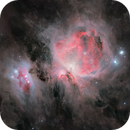 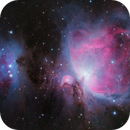 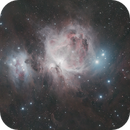 I also neglected to mention I have photographed M 42 before with a Canon EOS 7D (very similar field achieved with the 2600mc) without having these artifacts present. Given the similar field, assuming my asi2600mc isn't defective, I doubt changing to the 2600mc is the issue. I appreciate the quick insight, but I feel there is something more to these artifacts, and I certainly hope for a way to prevent them aside from changing gear or forcing awkward framing.
|
You cannot like this item. Reason: "ANONYMOUS".
You cannot remove your like from this item.
Editing a post is only allowed within 24 hours after creating it.
You cannot Like this post because the topic is closed.
Copy the URL below to share a direct link to this post.
This post cannot be edited using the classic forums editor.
To edit this post, please enable the "New forums experience" in your settings.
The thread is this one: https://www.astrobin.com/forum/post/180614/The cure is simple: changing framing works 99% of the times. And so is changing gears but I suppose that is a step too far. The rule is there to guarantee (well, to a degree) that you don't have those nasty streaks. I myself have imaged the aforementioned objects and not a trace of off-field star streaks to be seen. It doesn't mean I can guarantee it won't happen with another combination of sensor size, refractor/lens and framing orientation. Unless I stick to my own rule.
|
You cannot like this item. Reason: "ANONYMOUS".
You cannot remove your like from this item.
Editing a post is only allowed within 24 hours after creating it.
You cannot Like this post because the topic is closed.
Copy the URL below to share a direct link to this post.
This post cannot be edited using the classic forums editor.
To edit this post, please enable the "New forums experience" in your settings.
Is there any filter in the setup? I’ve had similar looking artifacts (though narrower) that left after replacing my mounted filters with unmounted versions.
|
You cannot like this item. Reason: "ANONYMOUS".
You cannot remove your like from this item.
Editing a post is only allowed within 24 hours after creating it.
You cannot Like this post because the topic is closed.
Copy the URL below to share a direct link to this post.
This post cannot be edited using the classic forums editor.
To edit this post, please enable the "New forums experience" in your settings.
I have similar FOV, no issues here. 2600mm + Esprit 100 @550mm. RAW stacks combined in RGB, no further processing. 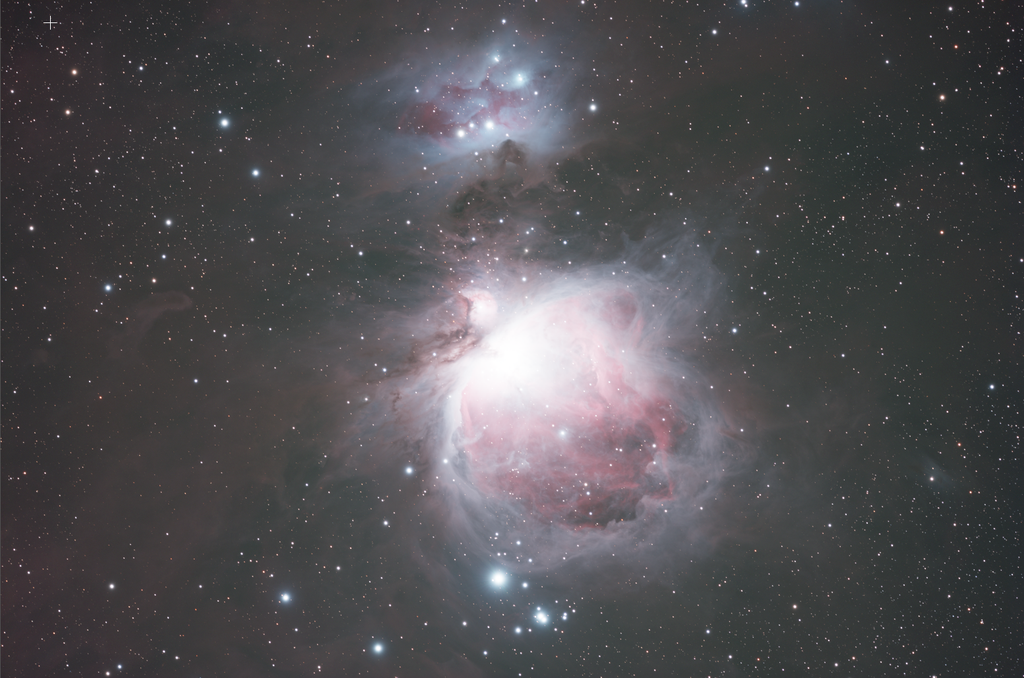 I also shot previously with 80ED + 0,85x reducer with no issues as well. I hope this helps, Luka
|
You cannot like this item. Reason: "ANONYMOUS".
You cannot remove your like from this item.
Editing a post is only allowed within 24 hours after creating it.
You cannot Like this post because the topic is closed.
Copy the URL below to share a direct link to this post.
This post cannot be edited using the classic forums editor.
To edit this post, please enable the "New forums experience" in your settings.
I had once similar artefacts on my WO GT81 and i figured out it was due to moisture drops on the inside of my lense. Not sure in your case because of the switching position in the frame. Sorry i cant show any frames anymore…i deleted them a while ago. But the flares looked exactly like that.
CS Ben
|
You cannot like this item. Reason: "ANONYMOUS".
You cannot remove your like from this item.
Editing a post is only allowed within 24 hours after creating it.
You cannot Like this post because the topic is closed.
Copy the URL below to share a direct link to this post.
This post cannot be edited using the classic forums editor.
To edit this post, please enable the "New forums experience" in your settings.
Mike Webster:
Is there any filter in the setup? I’ve had similar looking artifacts (though narrower) that left after replacing my mounted filters with unmounted versions. Hi Mike, There is no filter in the setup.
|
You cannot like this item. Reason: "ANONYMOUS".
You cannot remove your like from this item.
Editing a post is only allowed within 24 hours after creating it.
You cannot Like this post because the topic is closed.
Copy the URL below to share a direct link to this post.
This post cannot be edited using the classic forums editor.
To edit this post, please enable the "New forums experience" in your settings.
Luka Poropat:
I have similar FOV, no issues here.
2600mm + Esprit 100 @550mm.
RAW stacks combined in RGB, no further processing.

I also shot previously with 80ED + 0,85x reducer with no issues as well.
I hope this helps,
Luka Hi Luka, That is nice to know, thanks for your input. Perhaps it is a very specific set-up problem then? Have you ever had a similar issue or have you never had such artifacts show in your images?
|
You cannot like this item. Reason: "ANONYMOUS".
You cannot remove your like from this item.
Editing a post is only allowed within 24 hours after creating it.
You cannot Like this post because the topic is closed.
Copy the URL below to share a direct link to this post.
This post cannot be edited using the classic forums editor.
To edit this post, please enable the "New forums experience" in your settings.
Ben Schubert-Ludwig:
I had once similar artefacts on my WO GT81 and i figured out it was due to moisture drops on the inside of my lense. Not sure in your case because of the switching position in the frame. Sorry i cant show any frames anymore...i deleted them a while ago. But the flares looked exactly like that.
CS Ben Thanks for the input. I'll double-check but as far as I'm aware, there's no moisture on or in the scope. Like you said with the changing position, might still be possible but less likely.
|
You cannot like this item. Reason: "ANONYMOUS".
You cannot remove your like from this item.
Editing a post is only allowed within 24 hours after creating it.
You cannot Like this post because the topic is closed.
Copy the URL below to share a direct link to this post.
This post cannot be edited using the classic forums editor.
To edit this post, please enable the "New forums experience" in your settings.
andrea tasselli:
The thread is this one: https://www.astrobin.com/forum/post/180614/
The cure is simple: changing framing works 99% of the times. And so is changing gears but I suppose that is a step too far. The rule is there to guarantee (well, to a degree) that you don't have those nasty streaks. I myself have imaged the aforementioned objects and not a trace of off-field star streaks to be seen. It doesn't mean I can guarantee it won't happen with another combination of sensor size, refractor/lens and framing orientation. Unless I stick to my own rule. Thanks for the link! Based on your response it seems you may have arrived at this rule through experience / trial and error (please correct me if I'm wrong, maybe provide references if you found this rule elsewhere?). Have you had this issue in some previous images, and is the rule you follow how you came to removing the artifacts? If so, did it involve a change of equipment, or something to do with how you framed the target with the same setup?
|
You cannot like this item. Reason: "ANONYMOUS".
You cannot remove your like from this item.
Editing a post is only allowed within 24 hours after creating it.
You cannot Like this post because the topic is closed.
Copy the URL below to share a direct link to this post.
This post cannot be edited using the classic forums editor.
To edit this post, please enable the "New forums experience" in your settings.
A little update on something I've identified. My M 42 session did not involve a meridian flip, but my IC 434 session did. I stacked the data from either side of the meridian separately, performed the following in Siril to both images: - Background extraction - PCC - Green Noise Removal - Auto histogram transformation and found the artifact changes quite significantly: Before meridian flip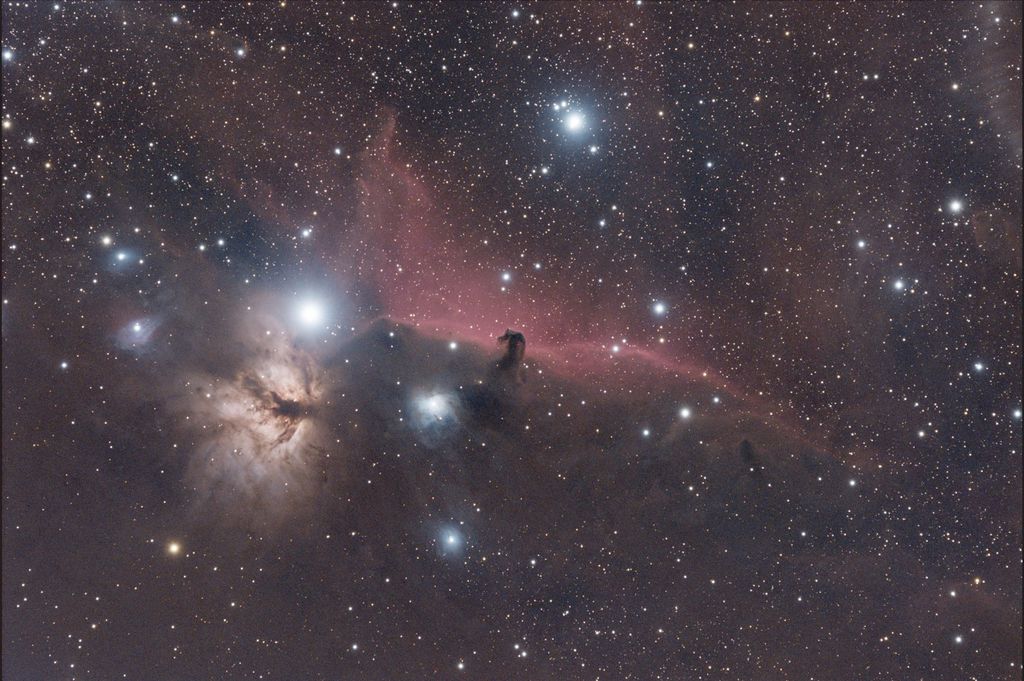 After meridian flip After meridian flip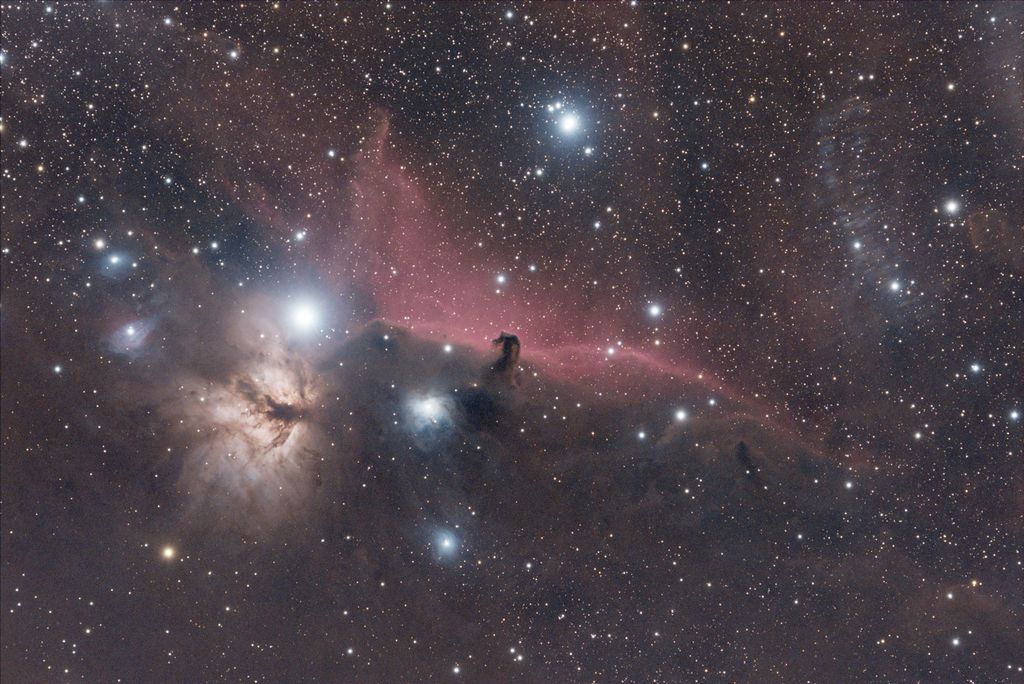 There's about 90 minutes of integration either side. That extended artifact towards the center in the post-meridian flip image persists in all sub frames after the meridian flip.
|
You cannot like this item. Reason: "ANONYMOUS".
You cannot remove your like from this item.
Editing a post is only allowed within 24 hours after creating it.
You cannot Like this post because the topic is closed.
Copy the URL below to share a direct link to this post.
This post cannot be edited using the classic forums editor.
To edit this post, please enable the "New forums experience" in your settings.
The answer is simple. The star is reflecting off the edge of something in your imaging train. In my experience it's typically your filters. You need to shine a flashlight down the end of the OTA and look for whatever is shiny on the way to your camera sensor. The answer to the reason it looked 'different' after flip is simply because your scope wasn't perfectly in the same place, and your sensor might have ended up with a bit of field rotation, enough to change it up. That difference made the light hit a slightly different angle, scattering the light more.
The solution is not always as simple. You need to black out or flock edges to get rid of this problem. In my case, I had to blacken the edges of my filter masks with a 'vantablack' type paint. Until you find what's shiny inside your scope, I can't tell you for sure what the solution is going to be.
Like someone mentioned earlier, you can shift your framing to put a bandaid on the problem and the reflection should go away. It's not a fix though.
|
You cannot like this item. Reason: "ANONYMOUS".
You cannot remove your like from this item.
Editing a post is only allowed within 24 hours after creating it.
You cannot Like this post because the topic is closed.
Copy the URL below to share a direct link to this post.
This post cannot be edited using the classic forums editor.
To edit this post, please enable the "New forums experience" in your settings.
Brian Puhl:
The answer is simple. The star is reflecting off the edge of something in your imaging train. In my experience it's typically your filters. You need to shine a flashlight down the end of the OTA and look for whatever is shiny on the way to your camera sensor. The answer to the reason it looked 'different' after flip is simply because your scope wasn't perfectly in the same place, and your sensor might have ended up with a bit of field rotation, enough to change it up. That difference made the light hit a slightly different angle, scattering the light more.
The solution is not always as simple. You need to black out or flock edges to get rid of this problem. In my case, I had to blacken the edges of my filter masks with a 'vantablack' type paint. Until you find what's shiny inside your scope, I can't tell you for sure what the solution is going to be.
Like someone mentioned earlier, you can shift your framing to put a bandaid on the problem and the reflection should go away. It's not a fix though. Hello Brian, Thanks so much for your reply. That explanation makes a lot of sense for what is going on. I had a look down the OTA, and I think I found the culprit following your understanding: 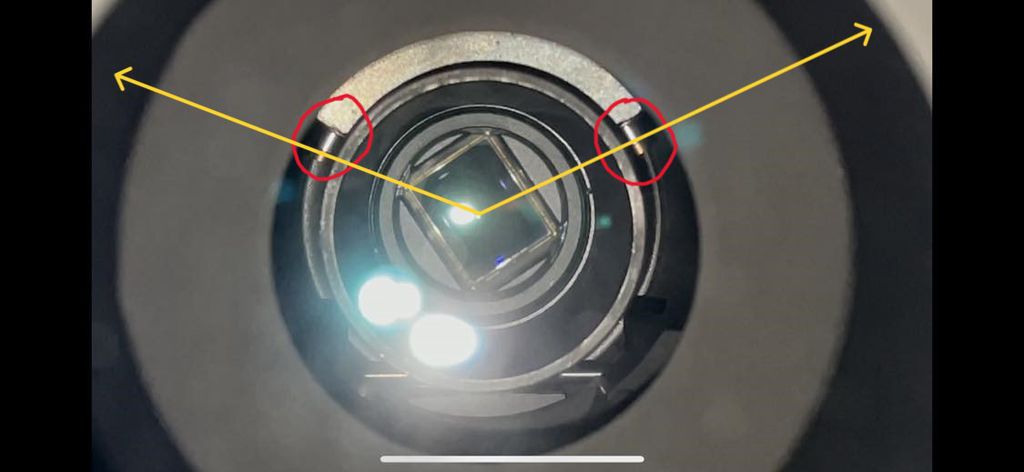 Going down the imaging train, there's a pair of metal pieces roughly halfway down which are quite reflective. I had a little play with my images overlapping them over the sensor and there seems to be correlation between the artifacts and the relative location of these metal bits with the sensor orientation. I think these metal pieces would cause internal reflections for bright objects based on your response, though I would have thought the matte shielding in the foreground of the picture would stop distant light sources from interacting with them. I'm unsure how accessible they are, or even what their purpose is. Does this seem like something that would cause the problem based on your understanding? If so I at least have comfort knowing what the cause is!
|
You cannot like this item. Reason: "ANONYMOUS".
You cannot remove your like from this item.
Editing a post is only allowed within 24 hours after creating it.
You cannot Like this post because the topic is closed.
Copy the URL below to share a direct link to this post.
This post cannot be edited using the classic forums editor.
To edit this post, please enable the "New forums experience" in your settings.
Those do look very suspect. I'd also look at the shiny ring around your sensor window inside your highlighted area. Looks like maybe an adapter ring. I think that could cause it too. That's how my filter masks looked when they caused the issue for me. Even the sensor window seems to reflect too, that bothers me a tad. Not sure if that's an actual issue tho.
|
You cannot like this item. Reason: "ANONYMOUS".
You cannot remove your like from this item.
Editing a post is only allowed within 24 hours after creating it.
You cannot Like this post because the topic is closed.
Copy the URL below to share a direct link to this post.
This post cannot be edited using the classic forums editor.
To edit this post, please enable the "New forums experience" in your settings.
Brian Puhl:
Those do look very suspect. I'd also look at the shiny ring around your sensor window inside your highlighted area. Looks like maybe an adapter ring. I think that could cause it too. That's how my filter masks looked when they caused the issue for me. Even the sensor window seems to reflect too, that bothers me a tad. Not sure if that's an actual issue tho. I'm not too sure how I'd remedy the issue. I don't believe those metal pieces are easily accessible. I also think the shiny ring is the end of the focuser tube? If you have any advice regarding preventing reflections off those pieces feel free to share. I may be able to rotate the scope and camera around a bit to get those pieces on the sides of the sensor rather than the edges whilst maintaining the FOV. I'm turning on my original assumption now that the light source causing the reflections is on-sky now. I'm unconvinced that distant sources, hence parallel rays if we think that way, can make it past the matte shielding further to the front, and hence to the metal pieces behind them. If we think in terms of rays, it may be more likely something around my house is reflecting off them instead? I know it's all theoretical, just thinking of easy ways to fix it without tearing my scope apart!
|
You cannot like this item. Reason: "ANONYMOUS".
You cannot remove your like from this item.
Editing a post is only allowed within 24 hours after creating it.
You cannot Like this post because the topic is closed.
Copy the URL below to share a direct link to this post.
This post cannot be edited using the classic forums editor.
To edit this post, please enable the "New forums experience" in your settings.
Just a question , a large dew shield can help with that shinny stars reflection out of the fov?
|
You cannot like this item. Reason: "ANONYMOUS".
You cannot remove your like from this item.
Editing a post is only allowed within 24 hours after creating it.
You cannot Like this post because the topic is closed.
Copy the URL below to share a direct link to this post.
This post cannot be edited using the classic forums editor.
To edit this post, please enable the "New forums experience" in your settings.
I had a similar issue. Here the link https://www.astrobin.com/forum/post/177789/Good luck, Rob
|
You cannot like this item. Reason: "ANONYMOUS".
You cannot remove your like from this item.
Editing a post is only allowed within 24 hours after creating it.
You cannot Like this post because the topic is closed.
Copy the URL below to share a direct link to this post.
This post cannot be edited using the classic forums editor.
To edit this post, please enable the "New forums experience" in your settings.













